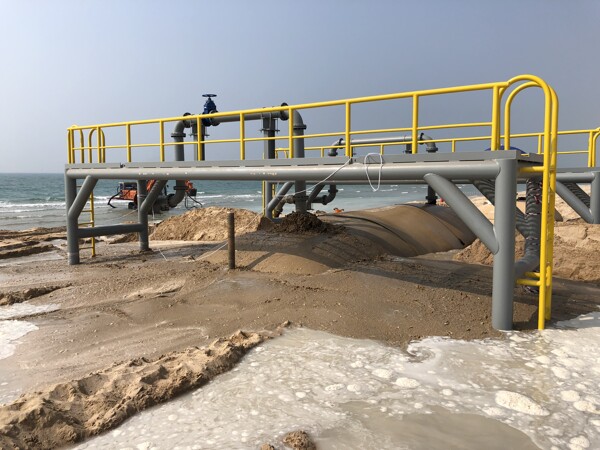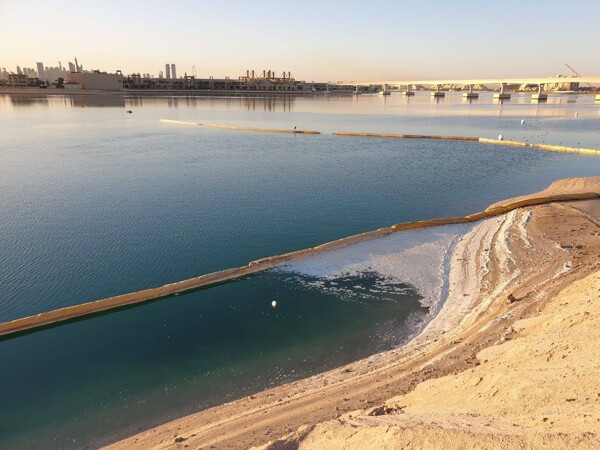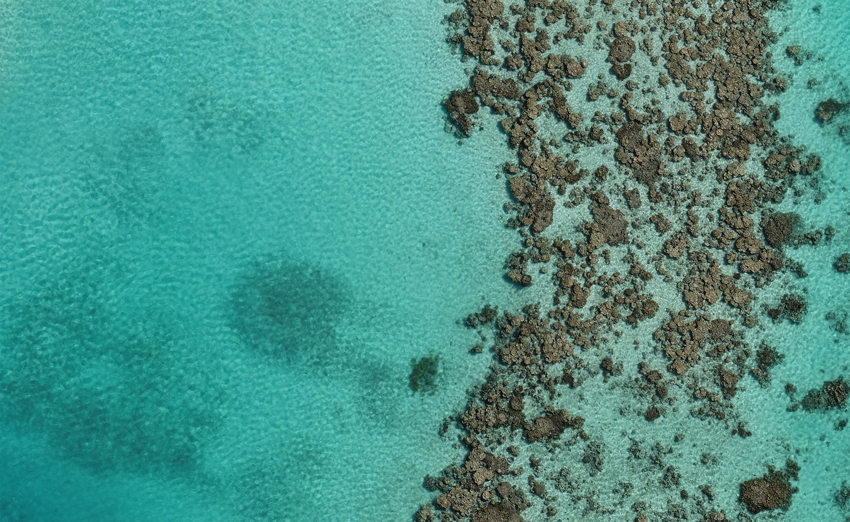Environmental Management Measures
To mitigate the environmental impacts from dredging and land creation,
the Environmental Impact Assessment (EIA) has put forward various environmental and social management measures.
To mitigate the environmental impacts from dredging and land creation,
the Environmental Impact Assessment (EIA) has put forward various environmental and social management measures.
Containment bunds will be constructed all along the proposed created area prior to sand fill. These containment bunds will be in the form of geo-tubes or other suitable earthen bund that could significantly reduce loss of fill material and control siltation of the dredge material in to the lagoon.

In addition to using the bund wall as a sediment containment measure, silt screens will be used by the Project.
Where practically possible, silt screens will be used (for instance at the reclamation outfalls) to contain the sediment spread. Preventing spreading of sediment allows to contain the impact of the project to its foot print and ensures that marine life outside the project boundary is not impacted.

Dredging will be performed by deploying Trailing Suction Hopper Dredgers (TSHDs). This dredging technology allows to remove accurate thin layers so that there is only the required dredging volume which is dredged. Green or Anti-Pollution Valves (APV) is developed for Trailing Suction Hopper Dredgers (TSHDs) which reduces turbidity caused by the overflow during dredging process. The APV valve is mounted on the TSHD currently foreseen to execute the works at Addu City. Regular maintenance and check of green valve will be undertaken to ensure its proper functioning.
Impact and mitigation monitoring will be carried out to compare predicted and actual impacts occurring from project activities and determine efficiency of the mitigation measures for the Project.
Regular monitoring of sedimentation, seawater quality, noise, air quality, groundwater quality, coral health and benthic community at the construction footprint and in the vicinity will be carried out as detailed out in the Environmental Monitoring Plan (EMP) of the EIA.
Monitoring reports will be transmitted to EPA on a weekly basis.
More information on EIA can be found here.
Based on the results from the marine ecology pre-survey and recommendations from the EIA, a coral relocation campaign will be performed prior start of the construction activities. More details on coral relocation can be found here.

All workers present on the work site will be given a proper induction to ensure a high level of awareness regarding the protection of terrestrial and marine wildlife and of the marine habitats in the project areas.
A specific focus will be given to the presence of Marine Protected Areas and associated diving / touristics activities in the vicinity of the work sites.
The Project aims to have open and transparent dialogue with a broad range of stakeholders and to provide Project information and to obtain feedback on the Project activities and potential impacts.
During the EIA process, stakeholder consultations were undertaken with various stakeholders identified by the Consultant. These parties were provided with the Project brief along with the approved concepts to collect their opinion and concerns.
Regular and effective communication will continue during the preparation and construction phases of the Project.
We invite you to share your question or feedback with us.